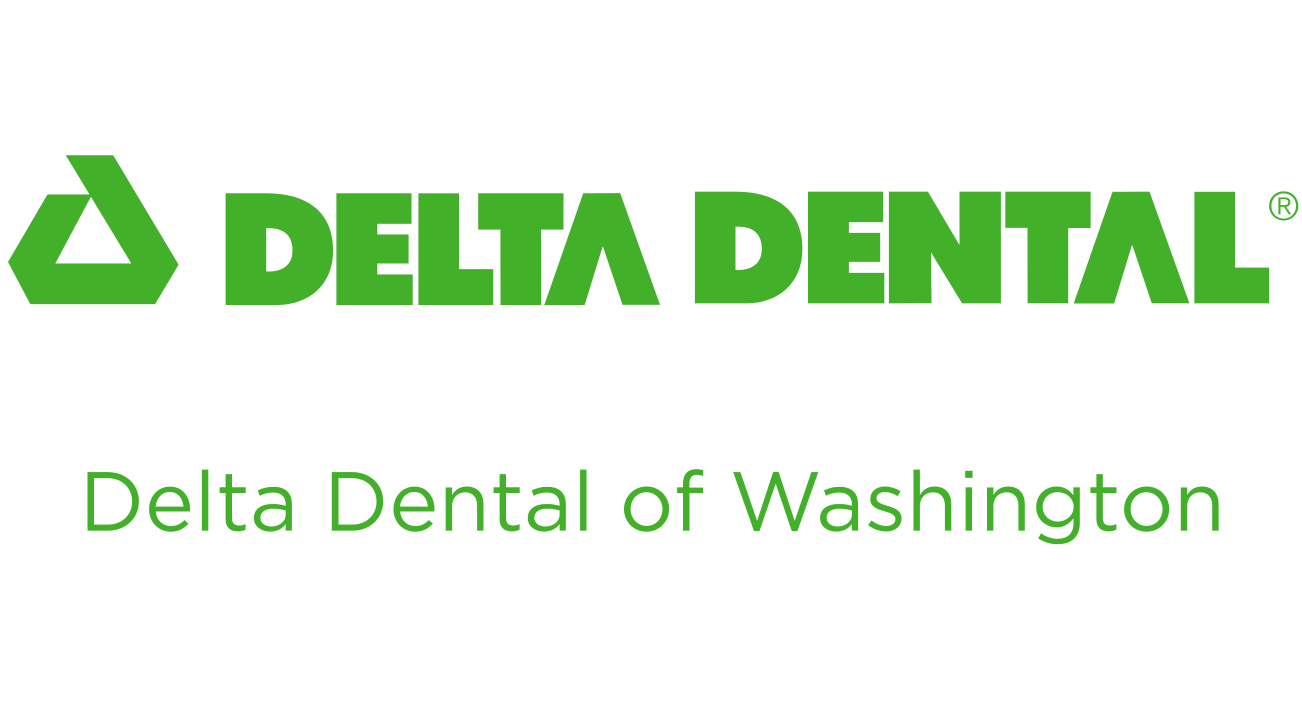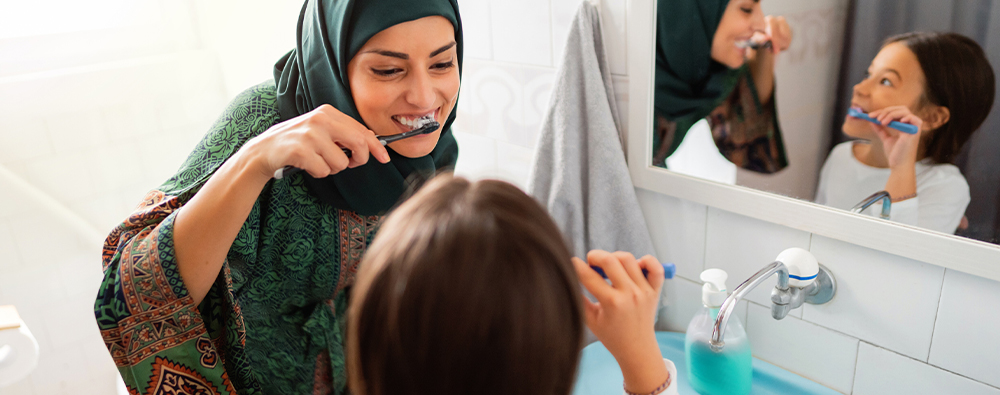Did you know that with a proper at-home oral care routine, you can set your smile up for success for years to come?
It’s true!
Not only do good oral habits help protect you from gum disease and cavities, but a twice-daily brushing and flossing schedule can actually save you some serious dough! One study performed by Delta Dental states that by practicing good oral hygiene, you could save $2,187 for every cavity prevented in your lifetime.
But what exactly does a proper at-home oral care routine look like? Let’s break it down.
Steps for a Proper At-Home Oral Care Routine
Flossing
We all know we’re supposed to do it – we may even avoid eye contact with the dentist when he asks how often we floss because chances are, we’re not doing it enough. And according to an analysis on American dental habits performed in 2016, roughly 32% of the American population doesn’t floss.
But flossing is crucial in preventing gum disease and periodontitis (the more advanced stage of gum disease) as it helps remove the food particles from between teeth and gums that the toothbrush just can’t reach.
So, what’s the “correct” way to floss and how do you know you’re doing it right?
- Take an American Dental Association approved dental floss and break off a piece about 18 inches in length.
- You’ll want to wrap each end of the floss around your middle finger (this will help stabilize the floss and allow you to continually wrap the floss as it gets dirty) and hold it tightly between your thumb and forefingers.
- Glide the floss between your teeth using a gentle rubbing motion.
- When it reaches the gum line, curve it into a C shape against the tooth and slide the floss into the space between your gum and tooth.
- Gently rub the floss against the side of your tooth, moving it away from the gum line in an up and down motion. Repeat this method on the rest of your teeth.
Mouthwash
Despite what Hollywood has led you to believe, the classic rinse-and-spit should actually occur between flossing and brushing, rather than at the end.
Why?
Well, the purpose of mouthwash is to rinse all the food particles that you just removed from between your teeth and gums out of your mouth. This way, you’re ensuring that nothing accidentally gets left behind and potentially stuck between your teeth and gums again.
Also, because the purpose of mouthwash is to rinse out the mouth, doing so after brushing actually negates all the good things the fluoride toothpaste does for your teeth.
If you have yet to incorporate mouthwash into your oral care routine, here’s an easy step-by-step guide so you can do so easily and effectively.
- Choose an ADA approved mouthwash. There’s a lot of different types of mouthwash i.e. antiseptic, fluoride, whitening, etc. so whichever you choose is up to you. However, it is recommended you use either fluoride or antiseptic as the latter will help to kill any bacteria that may already be wreaking havoc on your teeth and the former will help strengthen your tooth’s enamel.
- Fill the cup up to the recommended dosage line and pour the mouthwash into your mouth, careful not to swallow it.
- Swish the mouthwash around for 30 sec. This ensures that the surfaces of every tooth are properly rinsed as well as your gums and tongue.
- When you are done, spit the mouthwash into the sink. If you are using a fluoride mouthwash, be sure to wait another 30 sec before rinsing to give the fluoride adequate time to work.
Brushing
Ah, the piece de resistance of your oral care routine.
If you do nothing else to care for your smile you likely, at the very least, brush your teeth twice-a-day. Which is good because brushing is key in preventing tooth decay, cavities, gum disease, and periodontitis.
But have you ever wondered why brushing your teeth is so important? And do you even know if you’re doing it right?
See, it all comes down to plaque. That’s the sticky film that coats our teeth and contains harmful bacteria. This plaque produces acids that attack tooth enamel, eventually breaking it down and causing cavities to form.
If left untreated, plaque hardens into what is known as tartar. Tartar is much harder to remove and makes keeping your teeth clean that much more difficult. The buildup of tartar also leads to inflammation along the gum line, which can cause gum disease and eventually periodontitis.
So how do you make sure you’re brushing your teeth properly?
- Using a soft-bristled toothbrush, place a pea-sized amount of an ADA-approved fluoride toothpaste onto the brush.
- Wet your toothbrush.
- Begin brushing. It’s best to brush in a circular motion along the front or outer surfaces of your teeth. Then, as your work your way along the back or inner surfaces and chewing surfaces, brush using vertical and back and forth strokes.
- Brush for a whole two minutes to ensure you’re getting all areas of your mouth, including your tongue.
- When the two minutes are up, spit the toothpaste into the sink and rinse with tap water.
- Admire your beautiful smile in the mirror!
It’s that simple!
And remember, brushing and flossing is just one part of keeping your smile healthy. It’s also important to see your dentist twice a year for cleanings and checkups to make sure there are no underlying or serious health conditions. They are the best resource for keeping your smile in tip-top shape for years to come.
Need a dentist but not sure where to look? With our “Find a Dentist” tool, you can locate an in-network provider based on factors that are important to you.
Find A Dentist












